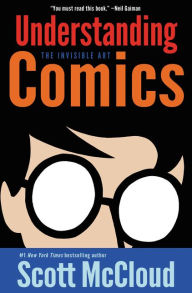From the Publisher
“A graphic adaptation of a novel like Fahrenheit 451 is more than just an illustrated version of the original . . . The book has the look of a classic comic. Hamilton deliberately limited his color choices, so much of the book is in the muted tones of blue, green and gray. But that is punctuated by the fire scenes, which reflect some of the most memorable passages in the novel . . . Apart from the images, Hamilton manages to retain much of the power of Bradbury's original words.” —Lynn Neary, NPR
“If you know the novel, you'll still be thrilled by Tim Hamilton's artwork in this new version, which combines a comic-book clarity--the panels are simple and straightforward, without the distraction of a lot of visual razzmatazz--with a deep, humane rendering of the novel's theme.” —Julia Keller, Chicago Tribune
“Vibrant and vital . . . [Hamilton] saturates the story with his own evocative energy and vision. He doesn't use all of Bradbury's words, instead allowing the story's inherent visual propulsion to add even more depth and texture to an already-indelible tale . . . Hamilton's arousing adaptation doesn't just update Bradbury's novel. It primes Fahrenheit 451, long a staple of high school and college reading lists, for rediscovery. Like the greatest works of art, its rugged heart and soul are evergreen; that it is, perhaps, even more relevant today, imbues the book with an unsettling prescience that even Bradbury may never have predicted.” —Renee Graham, The Boston Globe
“[Hamilton] boasts the tools--and chops--to take on a Bradbury classic that's already tripped up the greats (like François Truffaut). He turns in a vivid and relevant meditation that will surely become a resurgent favorite of nervous librarians everywhere.” —Richard Pachter, The Miami Herald
“Tim Hamilton's illustrations have given new life to this venerable work.” —Nick Smith, ICv2
“Turning Ray Bradbury's Fahrenheit 451 into a graphic novel couldn't have been an easy task. After all, the action in the veteran sci-fi author's 1953 novel . . . largely consists of characters sitting around a fire station talking about books, characters sitting around a suburban living room talking about books, and characters sitting around a twilit campfire talking about books. Fortunately, Tim Hamilton proves himself up to the task of making such scenes visually arresting, through stark shadows and subtly rendered facial expressions . . . Hamilton renders the tome-torching sequences in brilliant bursts of orange and yellow, and you can almost feel the flames crackling off the pages.” —John Lucas, The Georgia Straight (Vancouver)
“Illustrated by Tim Hamilton, whose simple style can carry a threat all its own, this version is likely to take off.” —Kel Munger, Sacramento News Review
“If you enjoyed watching the apocalyptic Watchmen, or Frank Miller's Sin City and The Spirit, you really must hustle to your nearest book store to pick up a copy of the new Fahrenheit 451 . . . With its sharp dialogue, powerful message, and stunning imagery, Fahrenheit 451 burns white hot.” —Nylon Guys
“The intellectually and viscerally engaging story is quite effective in graphic form. Hamilton's consistently muted color palette of blacks, blues, and grays sustains the overarching brooding mood and renders the bright flashes of red and orange flames all the more startling in contrast. Fans of 451 should find this version illuminating, and those who haven't read the original novel may seek it out after reading this fine adaptation.” —John Edward Royall, Charleston City Paper
“If you want a condensed classic, with pictures, this authorized version fits the bill. The art has a dark, flattened feel and stays low-key, only striking a strong note in the unnatural, spiky rendering of flames.” —Alex Good, Waterloo Region Record

















